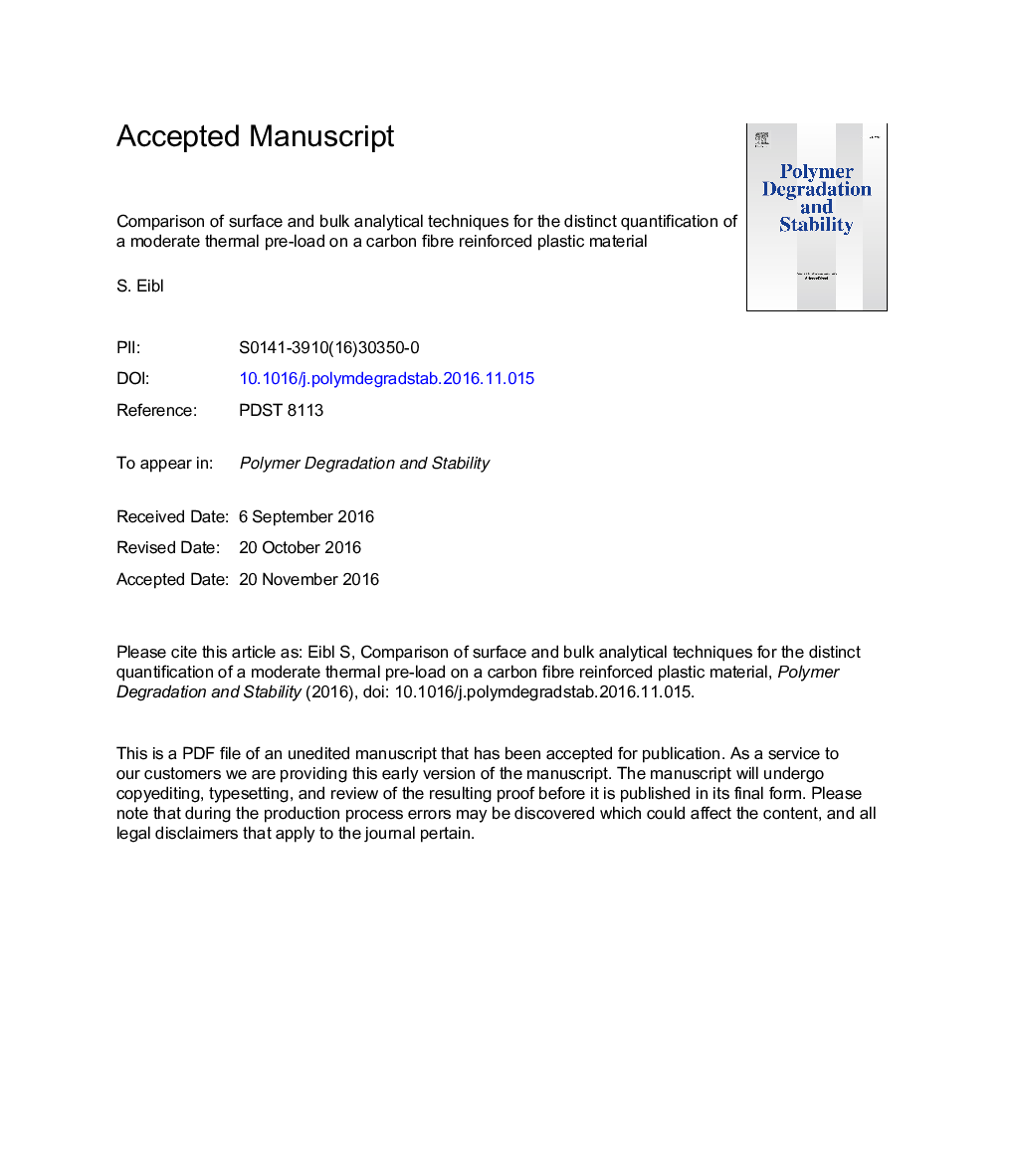| Article ID | Journal | Published Year | Pages | File Type |
|---|---|---|---|---|
| 5201022 | Polymer Degradation and Stability | 2017 | 28 Pages |
Abstract
This work provides a comparison of analytical techniques to separately determine temperature and duration of a thermal pre-load on a polymer matrix composite as well as its residual strength. The aim is to assess selected techniques applied on surfaces and for bulk material to characterize incipient heat damage. The methods are ideally non-destructive such as infrared spectroscopy (IR). A destructive method for bulk material is represented by thermogravimetric analyses (TGA). TGA can be applied independent of accessible surfaces and inhomogeneous polymer distribution. Empirical correlations of the recorded data with mechanical properties allow the assessment of residual strength for a composite with unknown thermal history. Multivariate (chemometric) analyses provide reliable values for time and temperature (average deviation < 10 °C) of the thermal pre-load and residual interlaminar shear strength (average deviation < 5%). Bench top and hand held attenuated total reflection (ATR) and diffuse reflectance (DR) IR spectrometers provide similar accuracy. A commercially available composite (HexPly® M18-1/G939) was investigated. Infrared spectroscopy of bulk material after grinding is identified to provide a high potential of in-service use in aviation.
Keywords
Related Topics
Physical Sciences and Engineering
Chemistry
Organic Chemistry
Authors
S. Eibl,
